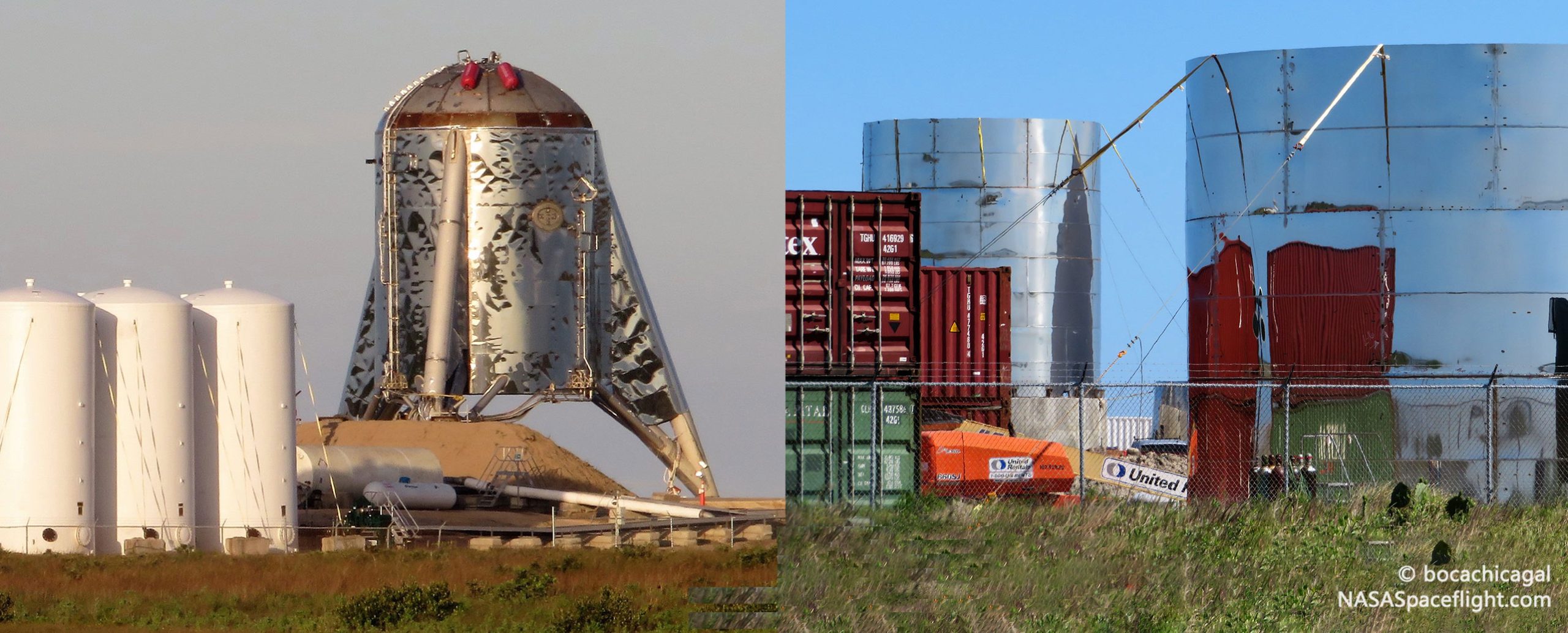
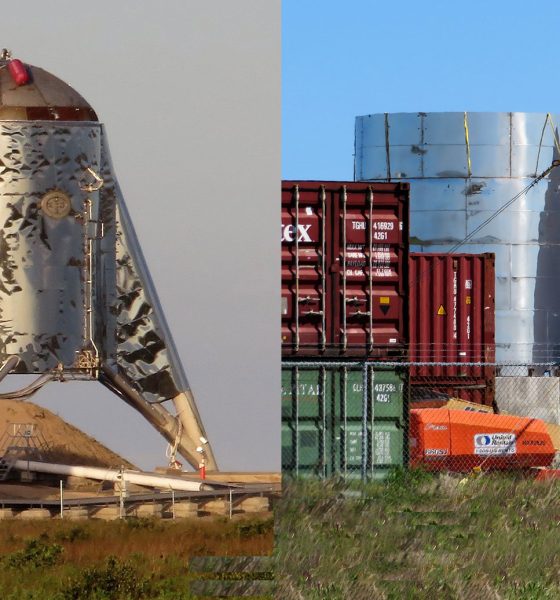
SpaceX
SpaceX builds new orbital Starship sections as Starhopper loses its engine
Amidst the growing buzz centered around the imminent second launch of Falcon Heavy, SpaceX’s South Texas team has continued to work on Starhopper and the first orbital Starship prototype. wrapping up the first major tests of the former and making new progress on the latter’s aeroshell.
For unknown reasons, SpaceX technicians uninstalled Starhopper’s Raptor – the second full-scale engine ever built – shortly after the vehicle’s first true hop test and proceeded to package it up for shipment elsewhere, likely McGregor’s test facilities or the Hawthorne factory. Simultaneously, the third completed Raptor (SN03) was recently installed in McGregor according to photos and observations published by NASASpaceflight.com, preparing to continue to the engineering verification tests that began in February. Once those tests are complete and the engine design is modified to account for the lessons learned with Raptor SN01, SpaceX’s next step will be to begin ramping Raptor production in preparation for multi-engine Starhopper testing and – eventually – the completion of the first orbit-capable Starship prototype.
Needless to say, SpaceX is juggling a lot of interconnected projects in an effort to speed its Starship/Super Heavy (formerly BFR) development program, none of which are being discussed by the company in more than a cursory manner. What follows is thus meant to be an informed but speculative estimate of what is currently going on and what is next for BFR.
Starhopper slips the surly bonds
Over the course of the last two weeks, SpaceX has been almost continuously testing the first integrated Starship prototype, a partial-fidelity vehicle known as Starhopper. The testing primarily involved almost a dozen wet dress rehearsals (WDRs) in which the rocket was filled with some quantity of liquid oxygen and methane propellant and helium for pressurization as engineers and technicians worked through several bugs preventing Raptor from safely operating. According to CEO Elon Musk, some form of ice – potentially methane, oxygen, or even water – was forming in or around parts known as “prevalves”, likely referring to valves involved in the process of supply rocket engines with the right amount of fuel and oxidizer.
Less than 24 hours later, those valve issues were apparently solved as Starhopper’s Raptor ignited for the first time in a spectacular nighttime fireball. 48 hours after that first ignition, SpaceX once again fueled Starhopper and ignited its Raptor engine, lifting a spectacular handful of feet into the air before reaching the end of its very short tethers. According to Musk, the first Raptor ignition was completed with “all systems green”. After the second test, no additional comments were made. Less than three days later, SpaceX technicians uninstalled Starhopper’s Raptor (SN02) and shipped it somewhere offsite, indicating that it may have suffered a fault similar to the one that caused relatively minor damage to Raptor SN01 at the end of its February test campaign. Regardless, it appears that this development will keep Starhopper grounded for the indefinite future barring the imminent shipment of Raptor SN04 or the completion of SN01’s refurbishment.
The Raptor pack grows
Starhopper’s unplanned grounding ties
While the exact strategy behind SpaceX’s Raptor and BFR propulsion development programs
Regardless, the somewhat buggy behavior exhibited by the integrated Raptor and Starhopper indicate the obvious: both are fairly immature hardware still in some form of development, be it the late (Raptor) or the very earliest stages (Starhopper). By performing even more testing and continuing to optimize and gain familiarity with the hardware at hand, the fairly predictable process of development will arrive at more or less finished products.


Starship’s first orbital prototype
Last but not least, work continues on what will hopefully become the first orbit-capable Starship prototype, built in full-scale out of sheets of stainless steel that are far thinner than the metal used to construct Starhopper. This, too, is a normal process of development – as progress is made, prototypes will gradually lose an emergency cushion of performance margins, a bit like a sculptor starting with a solid block of marble and whittling it down to a work of art. Starhopper is that marble block, with inelegant, rough angles and far more material bulk than truly necessary.
As seen above, the orbital prototype – just the second in a presumably unfinished series – is already dramatically more refined. Instead of the first facade-like nose cone built for Starhopper, Starship’s nose section is being built out of smoothly tapered stainless steel panels that appear identical to those used to assemble the rocket’s growing aeroshell and tankage. As of now, there are five publicly visible Starship sections in various forms of fabrication, followed by a half-dozen or so tank dome segments waiting to be welded together as finished bulkheads.
Intriguingly, the only quasi-public official render of SpaceX’s steel Starship features visible sections very similar to those seen on the orbital prototype’s welded hull. They aren’t all visible in the render, but those that are are a distinct match to the aspect ratio of the welded sections visible in South Texas.

Extrapolating from this observation, Starship, as rendered, is comprised of approximately 16 large cylinder sections and 4-8 tapered nose sections. Based on the real orbital prototype, each large section is 9m in diameter and ~2.5m tall. Assuming Starship is 55 meters (180 ft) tall, this would translate into 22 2.5m sections, a nearly perfect fit with what is shown in the official render. Back in South Texas, SpaceX has 6 tapered sections and 7 cylinder sections in work, meaning that they would reach around 32.5m (~105 ft) – about 60% of a Starship hull – if stacked today.
If we assume that SpaceX follows Falcon procedures to build the seven-Raptor thrust structure separately (~2 sections) and excludes most of the cargo bay (~2-3 sections) on the first orbit-capable Starship, those ~13 in-work sections could be just a tapered nose cone away from the prototype’s full aeroshell. Time will tell…
Check out Teslarati’s newsletters for prompt updates, on-the-ground perspectives, and unique glimpses of SpaceX’s rocket launch and recovery processes.

Elon Musk
Elon Musk gives nod to SpaceX’s massive, previously impossible feat
It was the booster’s 30th flight, a scenario that seemed impossible before SpaceX became a dominant force in spaceflight.
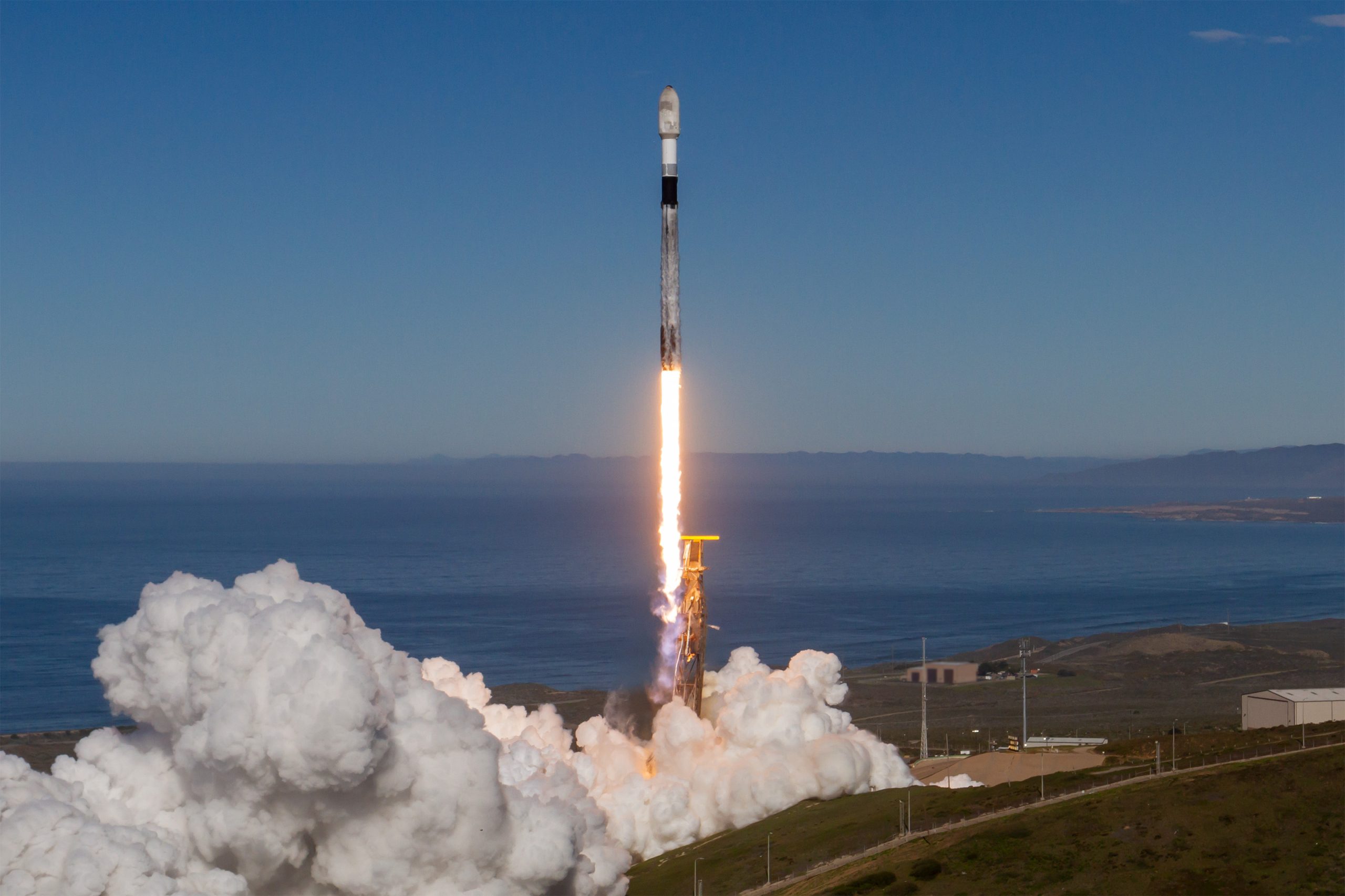
Elon Musk gave a nod to one of SpaceX’s most underrated feats today. Following the successful launch of the Transporter-15 mission, SpaceX seamlessly landed another Falcon 9 booster on a droneship in the middle of the ocean.
It was the booster’s 30th flight, a scenario that seemed impossible before SpaceX became a dominant force in spaceflight.
Elon Musk celebrates a veteran Falcon 9 booster’s feat
SpaceX completed another major milestone for its Smallsat Rideshare program on Friday, successfully launching and deploying 140 spacecraft aboard a Falcon 9 from Vandenberg Space Force Base. The mission, known as Transporter-15, lifted off two days later than planned after a scrub attributed to a ground systems issue, according to SpaceFlight Now. SpaceX confirmed that all payloads designed to separate from the rocket were deployed as planned.
The Falcon 9 used for this flight was booster B1071, one of SpaceX’s most heavily flown rockets. With its 30th mission completed, it becomes the second booster in SpaceX’s fleet to reach that milestone. B1071’s manifest includes five National Reconnaissance Office missions, NASA’s SWOT satellite, and several previous rideshare deployments, among others. Elon Musk celebrated the milestone on X, writing “30 flights of the same rocket!” in his post.
Skeptics once dismissed reusability as unfeasible
While rocket landings are routine for SpaceX today, that was not always the case. Industry veterans previously questioned whether reusable rockets could ever achieve meaningful cost savings or operational reliability, often citing the Space Shuttle’s partial reusability as evidence of failure.
In 2016, Orbital ATK’s Ben Goldberg argued during a panel that even if rockets could be reusable, they do not make a lot of sense. He took issue with Elon Musk’s claims at the time, Ars Technica reported, particularly when the SpaceX founder stated that fuel costs account for just a fraction of launch costs.
Goldberg noted that at most, studies showed only a 30% cost reduction for low-Earth orbit missions by using a reusable rocket. “You’re not going to get 100-fold. These numbers aren’t going to change by an order of magnitude. They’re just not. That’s the state of where we are today,” he said.
Former NASA official Dan Dumbacher, who oversaw the Space Launch System, expressed similar doubts in 2014, implying that if NASA couldn’t make full reusability viable, private firms like SpaceX faced steep odds.
Elon Musk
SpaceX’s Starship program is already bouncing back from Booster 18 fiasco
Just over a week since Booster 18 met its untimely end, SpaceX is now busy stacking Booster 19, and at a very rapid pace, too.
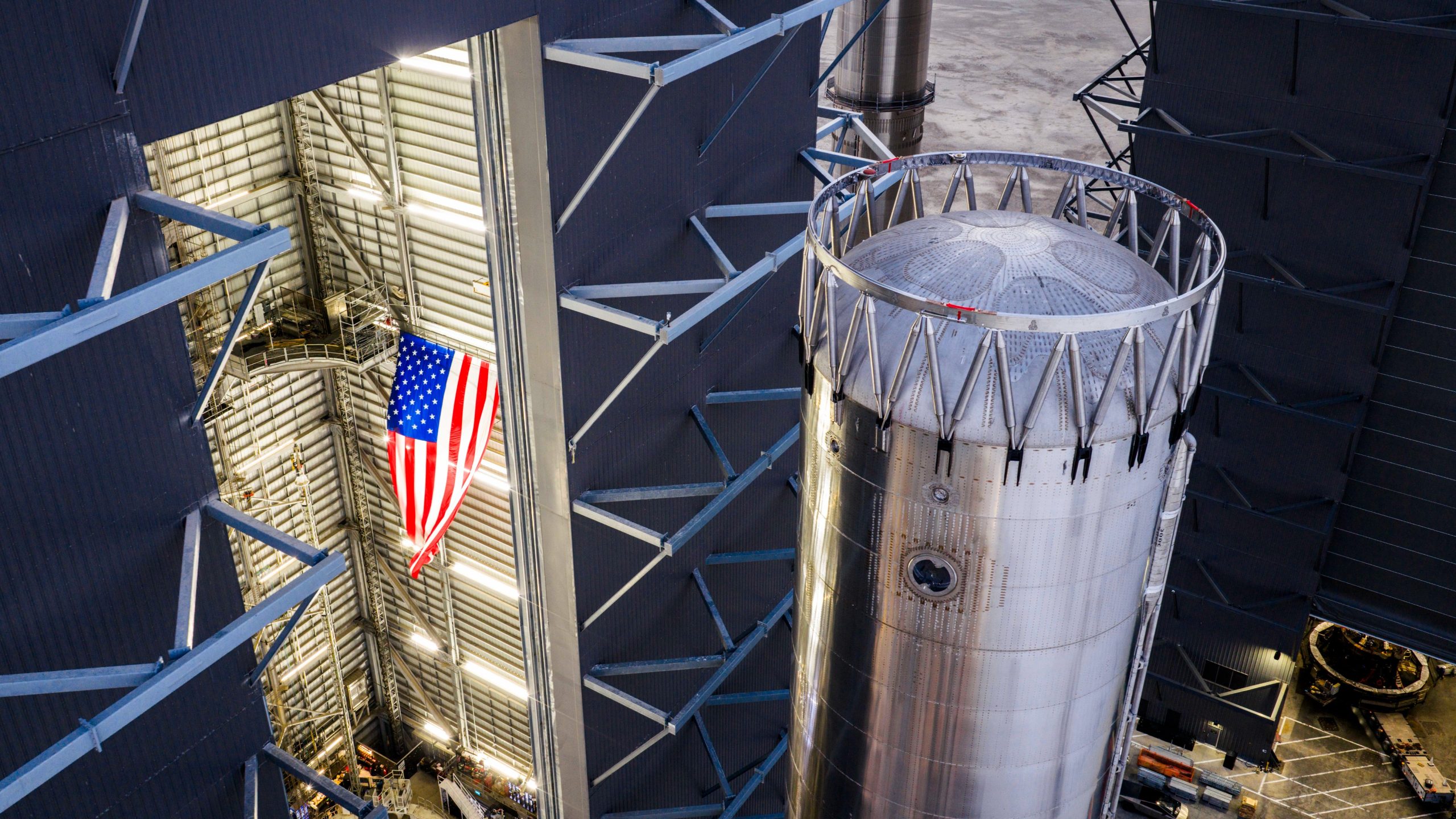
SpaceX is already bouncing back from the fiasco that it experienced during Starship Booster 18’s initial tests earlier this month.
Just over a week since Booster 18 met its untimely end, SpaceX is now busy stacking Booster 19, and at a very rapid pace, too.
Starship V3 Booster 19 is rising
As per Starbase watchers on X, SpaceX rolled out the fourth aft section of Booster 19 to Starbase’s MegaBay this weekend, stacking it to reach 15 rings tall with just a few sections remaining. This marks the fastest booster assembly to date at four sections in five days. This is quite impressive, and it bodes well for SpaceX’s Starship V3 program, which is expected to be a notable step up from the V2 program, which was retired after a flawless Flight 11.
Starship watcher TankWatchers noted the tempo on X, stating, “During the night the A4 section of Booster 19 rolled out to the MegaBay. With 4 sections in just 5 days, this is shaping up to be the fastest booster stack ever.” Fellow Starbase watcher TestFlight echoed the same sentiments. “Booster 19 is now 15 rings tall, with 3 aft sections remaining!” the space enthusiast wrote.
Aggressive targets despite Booster 18 fiasco
SpaceX’s V3 program encountered a speed bump earlier this month when Booster 18, just one day after rolling out into the factory, experienced a major anomaly during gas system pressure testing at SpaceX’s Massey facility in Starbase, Texas. While no propellant was loaded, no engines were installed, and no one was injured in the incident, the unexpected end of Booster 18 sparked speculation that the Starship V3 program could face delays.
Despite the Booster 18 fiasco, however, SpaceX announced that “Starship’s twelfth flight test remains targeted for the first quarter of 2026.” Elon Musk shared a similar timeline on X earlier this year, with the CEO stating that “ V3 is a massive upgrade from the current V2 and should be through production and testing by end of year, with heavy flight activity next year.”
Considering that Booster 19 seems to be moving through its production phases quickly, perhaps SpaceX’s Q1 2026 target for Flight 12 might indeed be more than feasible.
Elon Musk
Elon Musk shares SpaceX’s directive that destroys a prevalent media narrative
Musk’s comments followed Starlink’s initiatives for people affected by severe flooding in Indonesia and Cyclone Ditwah in Sri Lanka.
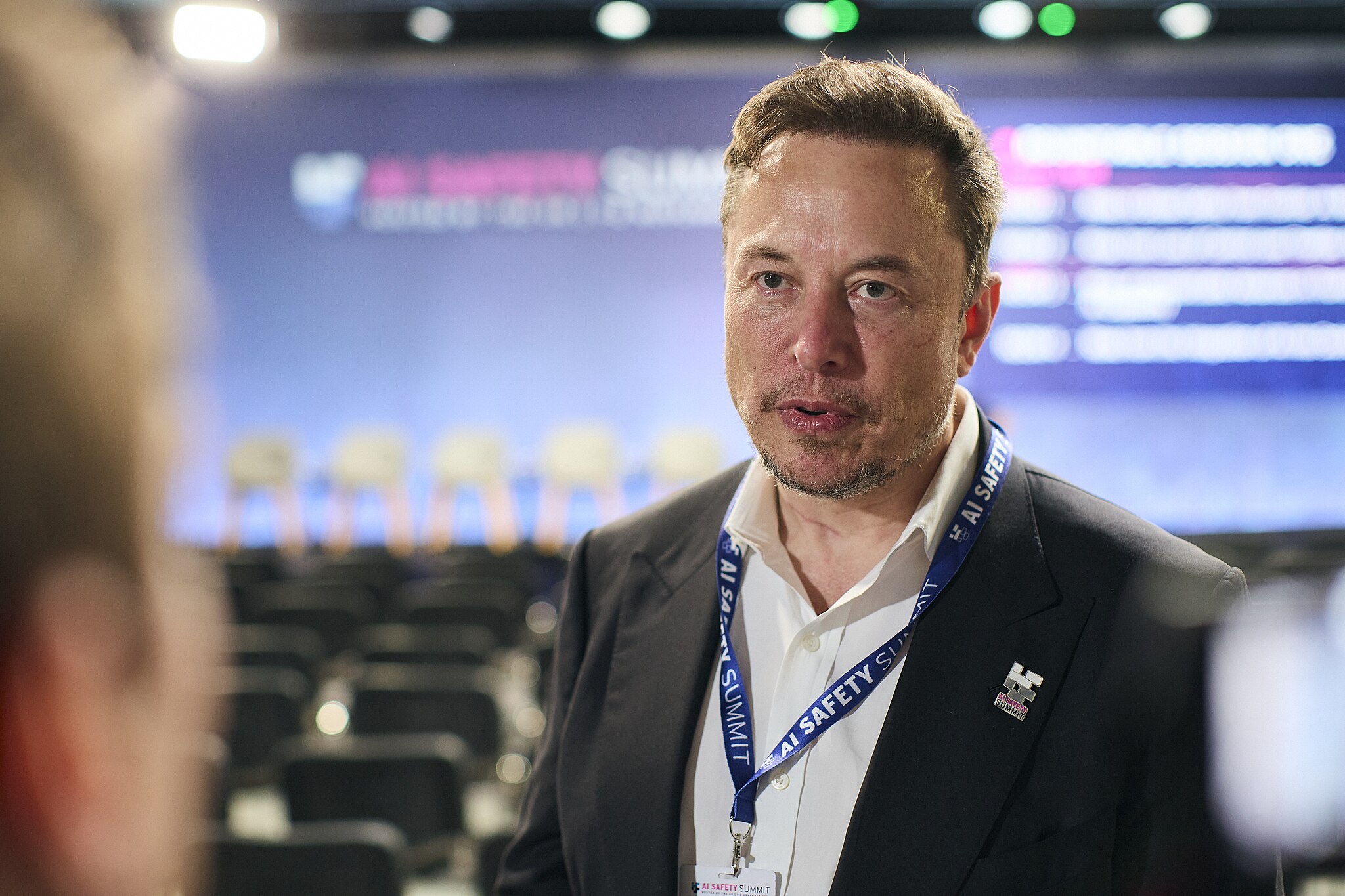
Elon Musk recently shared SpaceX’s standing policy to offer free Starlink service during natural disasters worldwide, highlighting the company’s commitment to pursue aid over profit during times of need.
Musk’s comments followed Starlink’s initiatives for people affected by severe flooding in Indonesia and Cyclone Ditwah in Sri Lanka.
Starlink activates free service in Indonesia and Sri Lanka
Starlink recently announced free service for those impacted by severe flooding in Indonesia’s Sumatra region, partnering with the government to deploy terminals rapidly to the hardest-hit areas. The offer extends to new and existing customers through December, restoring connectivity in zones where traditional networks have failed due to infrastructure damage.
Musk quoted the post on X, writing, “SpaceX standard policy is to make Starlink free whenever there is a natural disaster somewhere in the world. It would not be right to profit from misfortune.”
Starlink extended the same relief to Sri Lanka amid Cyclone Ditwah, coordinating with local authorities for additional support. The cyclone battered the island nation with heavy rains and winds, disrupting communications for thousands. Free access also lasts until year-end, emphasizing Starlink’s role in bridging gaps during crises.
“For those affected by the severe flooding in Indonesia and Sri Lanka in the aftermath of Cyclone Ditwah, Starlink is providing free service to new and existing customers through the end of December 2025. We’re also working with the Indonesian government to rapidly deploy terminals and restore connectivity to the hardest-hit areas on Sumatra, as well as with the Sri Lankan government to provide additional assistance,” Starlink wrote in a post on its official website.
Musk’s companies routinely provide aid
Musk’s firms have a track record of providing critical support in crises, often without fanfare, challenging portrayals of him as a comic book villain intent on enriching himself on the backs of a suffering populace. In January 2024 alone, Tesla opened Superchargers for free in Japan’s Hokuriku region after a magnitude 7.6 earthquake killed at least 55 and injured hundreds.
Similar efforts include Starlink deployments for the 2023 Maui wildfires, 2024 Hurricane Helene in North Carolina, and floods in Texas, where the service was used to help facilitate emergency coordination. These actions, which total millions in waived fees and logistics, demonstrate a proactive ethos among Musk’s companies, with Musk noting in past interviews that such aid stems from engineering solutions over optics.
The initiatives also provide a direct rebuttal of Musk’s characterization on mainstream media, which tends to lean negatively. This has become much more notable in recent years as Musk adopted more conservative policies. These negative sentiments came to a head earlier this year when Tesla stores, vehicles, and even some owners, were attacked during waves of anti-Tesla protests.








